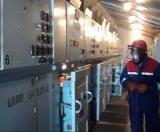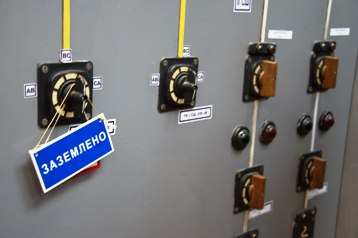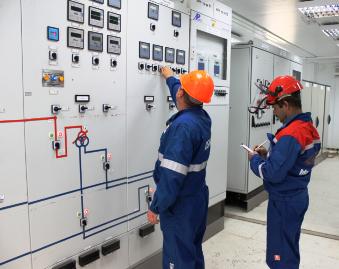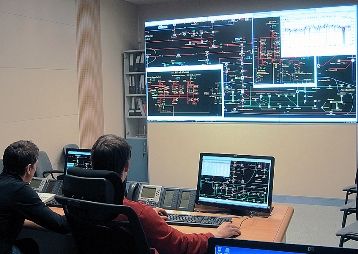Basic rules and recommendations for the production of operational switches in electrical installations
 Operational switching — this is one of the primary responsibilities of operational personnel. Switching is done to change the electrical circuit or the state of the equipment. In this article, we will consider the basic rules and recommendations for the production of operational switches in electrical installations.
Operational switching — this is one of the primary responsibilities of operational personnel. Switching is done to change the electrical circuit or the state of the equipment. In this article, we will consider the basic rules and recommendations for the production of operational switches in electrical installations.
Work switches in electrical installations are emergency and planned. Emergency switching produced in the event of an emergency in an electrical installation. Scheduled — these are equipment switches for regular repairs or for routine purposes. Let's take a closer look at the manufacturing switching process in both cases.
Scheduled switching, as mentioned above, is done to ensure the necessary safety measures during regular equipment repairs. Equipment repair schedules are developed and approved at each enterprise.In accordance with these schedules, requests for recall of equipment for repair are submitted in a timely manner. In addition, applications are coordinated with senior management as well as with related businesses and users.
Operating personnel serving an electrical installation in which repairs are planned prepare switching forms in advance, before the start of work. Switching form — this is the main document that guides the production of switches in electrical installations.
The switching form shows all the necessary equipment operations that must be carried out to ensure safety measures when carrying out planned work in the electrical installation. All operations in the toggle form are listed in the order in which they should be performed.
For the production of complex switches (pull-out for the repair of a system or section of buses, power transformer, voltage transformer, etc.) standard switching forms... This is necessary to simplify the process of preparing switching forms by the operating staff, as well as to eliminate errors in the preparation of forms.
So, before starting to draw up the switch form, the operator must clearly understand the purpose of the upcoming switches and correctly determine their sequence.
Here is an example of the sequence of operations for removing a power transformer for repair:
1. Operations with load switch (if it is necessary to adjust the voltage of the transformer to which the load of the transformer to be repaired is planned to be transferred).
2.Unloading the power transformer (transferring the load to another working transformer).
3. Circuit analysis (disconnecting disconnectors, separators from all sides from which voltage can be applied).
4. Disconnection, if necessary, of transformer protection circuits, including busbar differential protection schemes.
5. Grounding of the transformer (inclusion of fixed grounding blades, installation of grounding on all sides, from which voltage supply is possible).
It should be noted that in addition to the basic operations with the equipment and switching devices, it is necessary to include verification operations in the switching form. Here are some of the basic inspection operations to be performed in the manufacture of operational switches.

Before opening the disconnector, it is necessary to check the open position of the circuit breaker of this connection to prevent operations with the disconnector under load. In addition, before carrying out the switching operation, it is necessary to check the integrity of the support and traction insulation of the disconnectors. Very often the unsatisfactory condition of the isolation of disconnectors leads to accidents.
Likewise, before rolling or rolling in the distribution cart, it is necessary to check the off position of the circuit breaker of that cell, and to take measures to prevent the circuit breaker from being accidentally or accidentally closed.
When remotely switching off (closing) the switch, it is necessary to check its off (closed) position by means of signal lamps and readings of devices (ammeters).There are times when the indicator light shows an on position, but the switch is actually off.
If it is, for example, a sectional switch, further turning off the sectional switch will cause the section to turn off because the sectional switch was not initially turned on. Therefore, it is necessary to check the on (off) position of the switches, both by the signal lamps and by the presence (absence) of the load.
Before installing equipment location grounding, ensure that disconnectors, splitters, and pull-out carts are disconnected from all sides from which voltage may be applied. Immediately before the installation of the earthing, a check for the absence of voltage is carried out on those live parts to which the earthing knives will be connected or portable protective earthing will be installed.
After the full completion of the work, if it is necessary to land and turn on the equipment taken out for repair, it is mandatory to check the readiness of the equipment for commissioning, in particular, the absence of short circuits and grounding. Connecting the equipment to ground or short circuit leads to accidents and emergency situations.
If it is necessary to re-fix the connection from one bus system to another, it is necessary to check the closed position of the bus connection switch and its disconnectors from the bus systems. Otherwise, that is, if the SHSV is turned off, the breaking of the fork of the bus disconnectors will occur under load, which is unacceptable.
Before commissioning bus differential protection after carrying out operations with the equipment and with switching devices, it is necessary to check the differential current of the DZSh. Putting the DZSh into operation when the value of the differential current is greater than the maximum permissible will lead to false operation of this protection and venting of the bus systems.
When removing voltage transformers for repair, as well as transformers supplying low-voltage panels, it is necessary to ensure that there is no possibility of supplying voltage through the secondary winding. The combination of the secondary windings of the transformer being removed for repair and the transformer in service results in reverse transformation and the appearance of high voltages at the terminals of the primary winding, which is potentially dangerous to personnel working on the equipment removed for repair.
Therefore, it is necessary to provide a visible break not only on the primary circuits, but also on the secondary ones. For example, when a voltage transformer is removed for repair, a visible gap is provided by removing the covers of the test blocks, and in their absence - by disconnecting and short circuit of the secondary windings.
In addition to the operations performed, the switching form shows the initial state of the substation circuit and, in particular, the network section where the switching takes place, as well as the start and end times of the switching.
If it is necessary to carry out operations in substations of neighboring networks, for example, withdrawal of automatic reconnection at the other end of the line, removal of load and analysis of the circuit on the user's side, it is necessary to include the corresponding position in the switching form.
For example, before grounding the line, write down the item: «get confirmation from the dispatcher on duty about the disconnection of the line by the user and the possibility of installing grounding.»
The above rules may differ or be supplemented according to the characteristics of a specific electrical installation. Each power plant has relevant instructions and rules regarding the production of operational changes.
To simplify the drawing up of switching forms, as well as to prevent operational errors, in addition to standard switching forms, repair schemes are drawn up, which provide a sequence of actions when removing a section of the electrical network for repair.
Once the switching form has been drawn up, it must be verified. If switching operations are performed with a controlling person, then the switching form is additionally checked by the controlling person.
If the switches are simple and can be performed only by the operator, then the form check is performed by the dispatcher who gives the command to perform the switches. The list of simple and complex switches is drawn up and approved by the management of the enterprise.

In addition to the above, it should be noted that there are several guidelines to follow when performing an online switch:
— switching must be done with sufficient lighting;
— during operational switching, it is impossible to conduct external conversations, including being distracted by phone calls;
— before carrying out an operation with a switching device, it is necessary to make sure that the selected connection and part of the equipment are correct;
— if doubts arise regarding the correctness of carrying out a certain operation, then it is necessary to immediately stop the switching, report this to the senior operational staff (dispatcher);
— in case of failure of the electromagnetic blocking, it is necessary first of all to make sure that the operation has really been carried out correctly and that all the necessary conditions for carrying out this operation have been met. Do not jump to conclusions about the malfunction of the electromagnetic lock;
— it is forbidden to change the order of operations specified by the switching form;
— during operational switching, the necessary protective equipment must be used, as well as the rules for the safe operation of electrical installations must be observed.
All changes to the substation equipment scheme are manually recorded on the layout (mnemonic diagram). If the substation is installed SCADA system, then the chart displayed on it is automatically aligned with the current chart. If, for one reason or another, the position of the switching devices of the SCADA system circuit does not change automatically, it must be manually adjusted according to the actual state of the equipment.The same applies to a portable ground whose set position is not automatically displayed on the SCADA diagram.
Operational switching in emergency situations
In the event of an emergency in the electrical installation, service personnel must immediately begin to carry out operational switching to restore the normal circuit or exclude the possibility of equipment damage and danger to people.
In emergency situations, the operational staff performs a switchover without switching forms, recording all operations performed in the online log.
During the liquidation period of the accident, it is allowed to make notes on the draft, and after the incident has been liquidated, it is necessary to record all operations performed in strict chronological order in the operational log. If in an emergency it is necessary to carry out a complex switch, then the operating staff can use standard forms for this purpose.
The above measures are aimed at speeding up the elimination of an emergency situation, but this does not mean that you should act hastily. In the event of an emergency, it is very important to correctly make a general picture of what happened, to soberly assess the situation and act slowly, cautiously.

